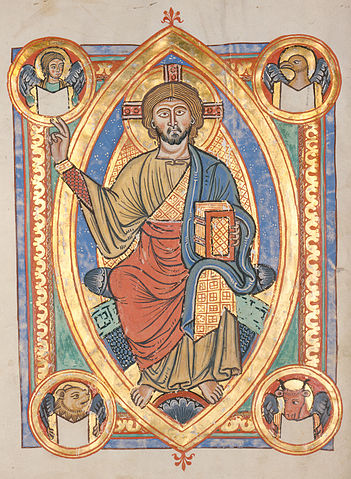 New Testament
New Testament
The New Testament is a collection of 27 writings from early Christianity in Greek, which can be divided into four text genres:
* The four gospels that tell the life, death and resurrection of Jesus
* the Acts of the Apostle Luke
* 21 letters to Christian communities and employees
* the Revelation of John (Apocalypse) - an originally heretical text
The Epistles of Paul or Corpus Paulinum are 13 epistles of the New Testament that name Paul of Tarsus as the author and were written between 48 and 61 AD.
At least seven of them are considered authentic:
1 Thessalonians,
2. the 1st and 2nd Letters to the Corinthians,
3. the book of Galatians,
4. the book of Romans,
5. Philippians and
6. the letter of Philemon.
However, when it comes to Colossians, Ephesians and 2 Thessalonians, it is controversial whether they were written by Paul or by individual students. With the exception of Romans, these letters are addressed to communities founded by him or to individual members.
The two letters of Peter are among the Catholic letters of the New Testament.
A Christian-Gnostic text also known as the Epistle of Peter (Epistle of Peter to Philip) is part of the Nag Hammadi writings (NHC VIII, 2).
| Apocalypse |
 |
(Revelation) |
 |
Steps 1-22 |
| Marc |
 |
Lion |
 |
Steps 12-20 |
| Matthew |
 |
Man |
 |
Steps 15-20 |
| John |
 |
Eagle |
 |
Steps 12-20 |
| Lucas |
 |
Bull |
 |
Steps 13-20 |

The 4 gospels only came into being in the 2nd century. The substantive contradictions are downplayed by today's churches. Nothing is known of an esoteric background anyway.
The so-called primordial gospel hypothesis assumes that three Synoptists used an Aramaic or Hebrew 'Nazarene gospel' that is now lost. The assumption of an original gospel written by the apostle Matthew in Hebrew or Aramaic goes back to a unanimous assessment of the early Christian church fathers.
The philosopher and Plato - follower Celsus leads 178 AD. that the Christian copyists of the Gospels had reworked the original text several times at their discretion. He scoffed at the Christian belief in providence. In the Roman Empire people laughed at the Christian name of God. The majority of Christians were composed of the uneducated strata, and the educated strata of the empire would have their own religious doctrines (which Ovid hinted at in his Metamorphoses and which later became subject to the Index Librorum).
Origines [5] tried to refute this. However, he had to admit that the transcripts differed, as 'the scribes added and omitted as they saw fit'.
.....
The teachings of the Christians are widespread:... almost the whole world knows the preaching of the Christians better than the views of the philosophers, and the Greek philosophers also spread esoteric and exoteric teachings. Moses took his teachings from other peoples, but other high cultures did the same.
Augustinus (354-430) analysed later in his 'De consensu evangelistarum' the possible contradictions. He probably used Eusebius' canon tables to accomplish this task. Augustine published the first theory of gospel composition in the history of Christianity.
- Augustin : De consensu evangelistarum
- Helmut Merkel : Die Widersprüche zwischen den Evangelien - Ihre polemische und apologetische Behandlung in der Alten Kirche bis zu Augustin
- G. Lüdemann : Wie entstand der Kanon der Bibel
- Gerd Lüdemann: Ketzer: Die dunkle Seite des frühen Christentums. 2. Auflage. Klampen, Springe 2016, ISBN 978-3-86674-531-5, S. 226, 267
- Das Leben des Origines
- Die Theologie der Logosmystik bei Origenes , Aloisius Lieske
- Logos und Nomos - Die Polemik des Kelsos wider das Christentum, Carl Andresen
- Aquarian gospel of Jesus , Levi H. Dowling, 1920
- Origin against Celsus, 1660
- Celsus and Aristides, James Rendel
- Origines Werke (1899)
- Franz Anton Winter: Über den Wert der direkten und indirekten Überlieferung von Origenes’ Büchern „contra Celsum“ Burghausen, 1903 (Digitalisat)
- A. Miura-Stange: Celsus und Origenes. Das gemeinsame ihrer Weltanschauung nach den acht Büchern des Origenes gegen Celsus, 1926.
- Carl Andresen: Logos und Nomos. Die Polemik des Kelsos wider das Christentum. De Gruyter, Berlin 1955.
- Catholic libraray -
of Spirituality
universal-path.org